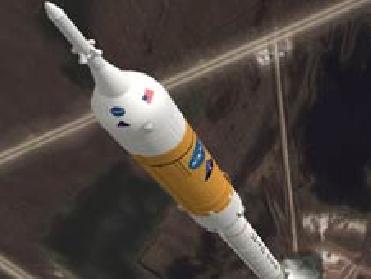
LONDON (BNS): Standard theory till now said that dark matter roughly forms in spherical lumps called 'halos', one of which envelopes the Milky Way, but now a research concludes that the invisible mass may actually be present right within the galaxy.
Research conducted by an international team of scientists, Dr Justin Read, Professor George Lake and Oscar Agertz of the University of Zurich, and Dr Victor Debattista of the University of Central Lancashire, predict that the Milky Way Galaxy contains a disk of 'dark matter'. The astronomers using the results of a supercomputer simulation have arrived at the theory of the presence of this disk.
The insight could allow physicists to directly detect and identify the nature of dark matter for the first time. The new research published in the Monthly Notices of the Royal Astronomical Society raises hope that the dark disk, and dark matter, could be directly detected in the near future.
The astronomers have said that unlike the familiar 'normal' matter that makes up stars, gas and dust, 'dark' matter is invisible and only its presence can be felt through its gravitational influence on its surroundings. Physicists believe that it makes up 22 per cent of the mass of the Universe, compared with 4 per cent of normal matter and 74 per cent comprising the mysterious 'dark energy'.
“But, despite its pervasive influence, no-one is sure what the dark matter consists of,” the astronomers said.
According to the new research, the gravitational influence of the stars and gas makes up the dark matter in the Galaxy. Before this theory, it was thought that dark matter roughly forms in spherical lumps called 'halos', one of which envelopes the Milky Way. However, this 'standard' theory is based on supercomputer simulations that model the gravitational influence of the dark matter alone.
During the course of the research, the astronomers found that stars and gas had settled into disks very early on in the life of the Universe and this affected how smaller dark matter halos were formed. The team's results suggest that most lumps of dark matter merged to form a halo around the Milky Way. “But the largest lumps were preferentially dragged towards the galactic disk and were then torn apart, creating a disk of dark matter within the Galaxy,” they felt.
Lead author of the research, Justin Read said that the dark disk only has about half of the density of the dark matter halo, which is why no one had spotted it before. “However, despite its low density, if the disk exists it has dramatic implications for the detection of dark matter on Earth,” Read said.
Another member of the team, Dr Victor Debattista compared the dark matter to like sitting in the car on the highway moving at 100 km an hour. “It feels like all the other cars are stationary because they are moving at the same speed,” Debattista said.
The scientists noted that the Earth and Sun moved at some 220 km per second along a nearly circular orbit about the centre of the Galaxy. “Since the dark matter halo does not rotate from an Earth-based perspective it feels as if there is a 'wind' of dark matter flowing at great speed. By contrast, the 'wind' from the dark disk is much slower than from the halo because the disk co-rotates with the Earth,” the astronomers said.
The abundance of low-speed dark matter particles could be a boon for researchers because they are more likely to excite a response in dark matter detectors than fast-moving particles. Prof. Laura Baudis, a collaborator at the University of
Zurich and one of the lead investigators for the XENON direct detection experiment said that current detectors cannot distinguish these slow moving particles from other background 'noise'. “But the XENON100 detector that we are turning on right now is much more sensitive. For many popular dark matter particle candidates, it will be able to see something if it's there,” Baudis added. The XENON direct detection experiment is located at the Gran Sasso Underground Laboratory in Italy.
 Next Article
Next Article














The Indian Air Force, in its flight trials evaluation report submitted before the Defence Ministry l..
view articleAn insight into the Medium Multi-Role Combat Aircraft competition...
view articleSky enthusiasts can now spot the International Space Station (ISS) commanded by Indian-American astr..
view article